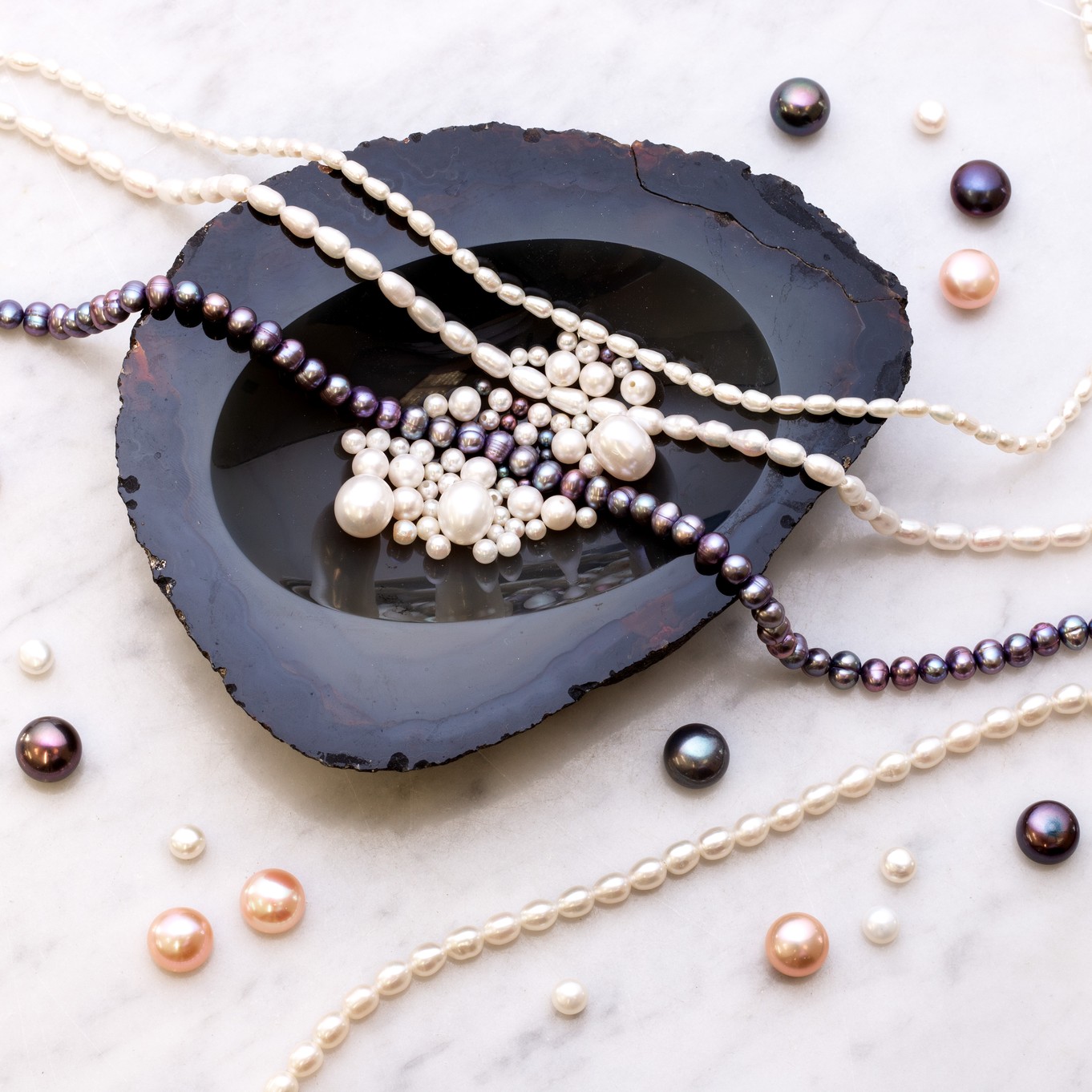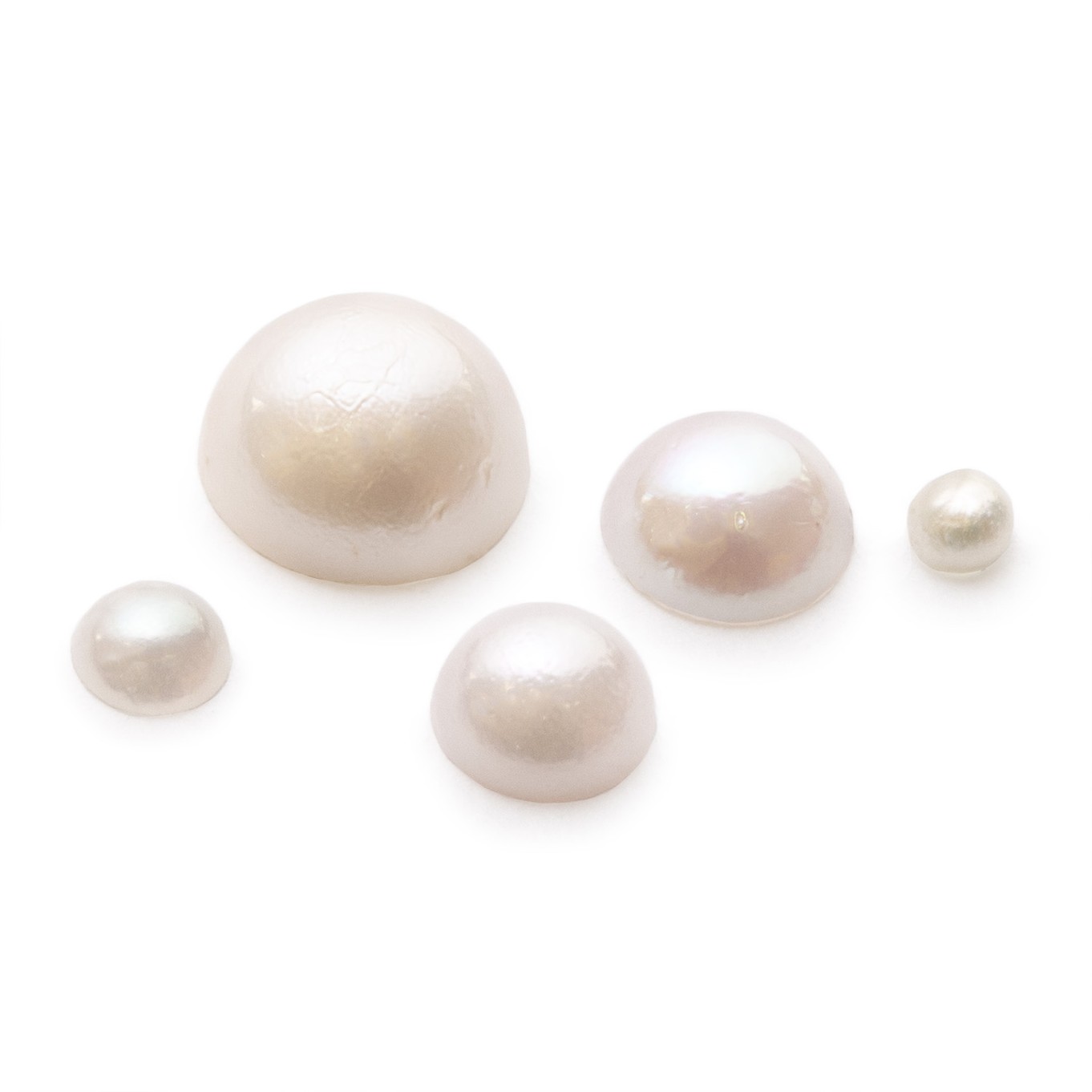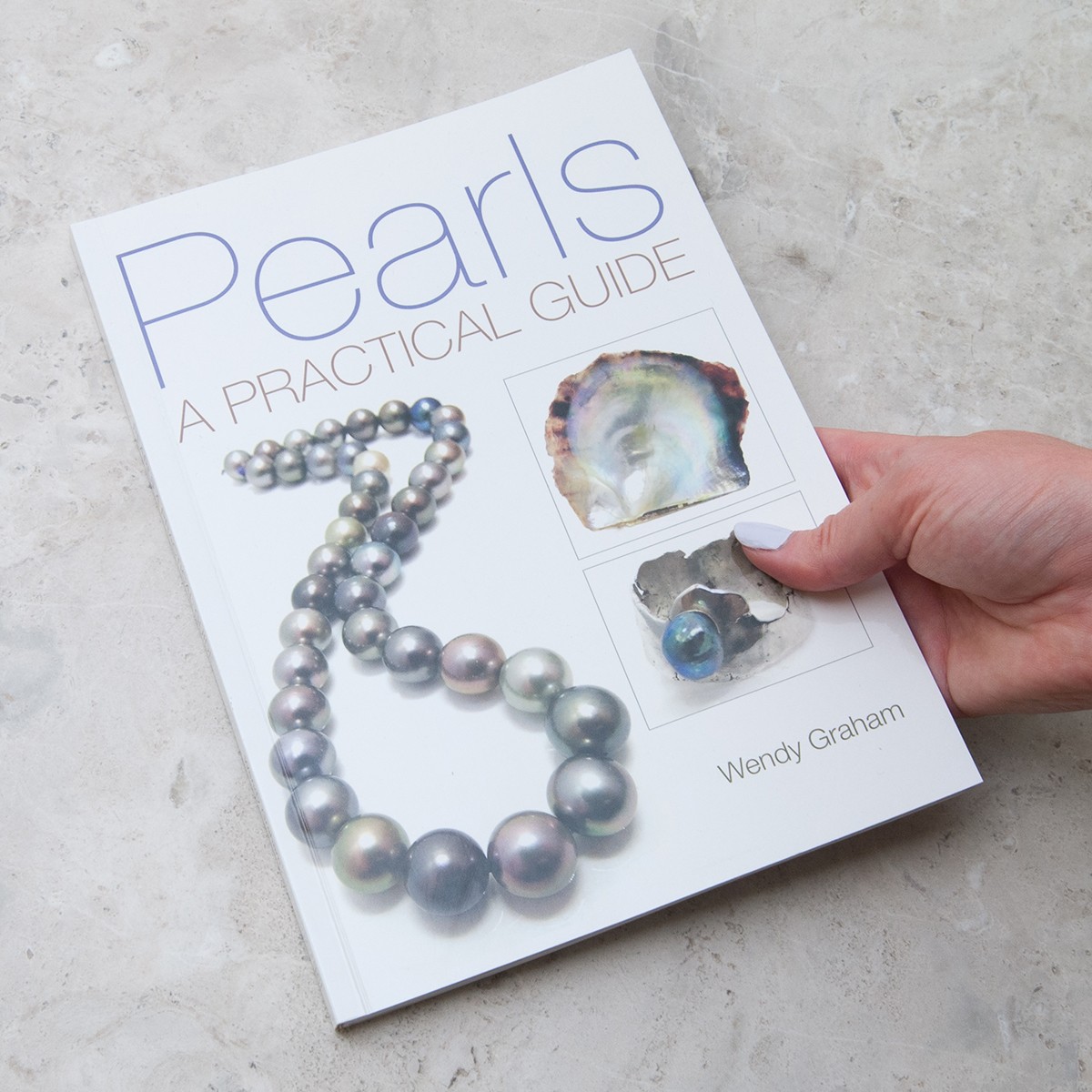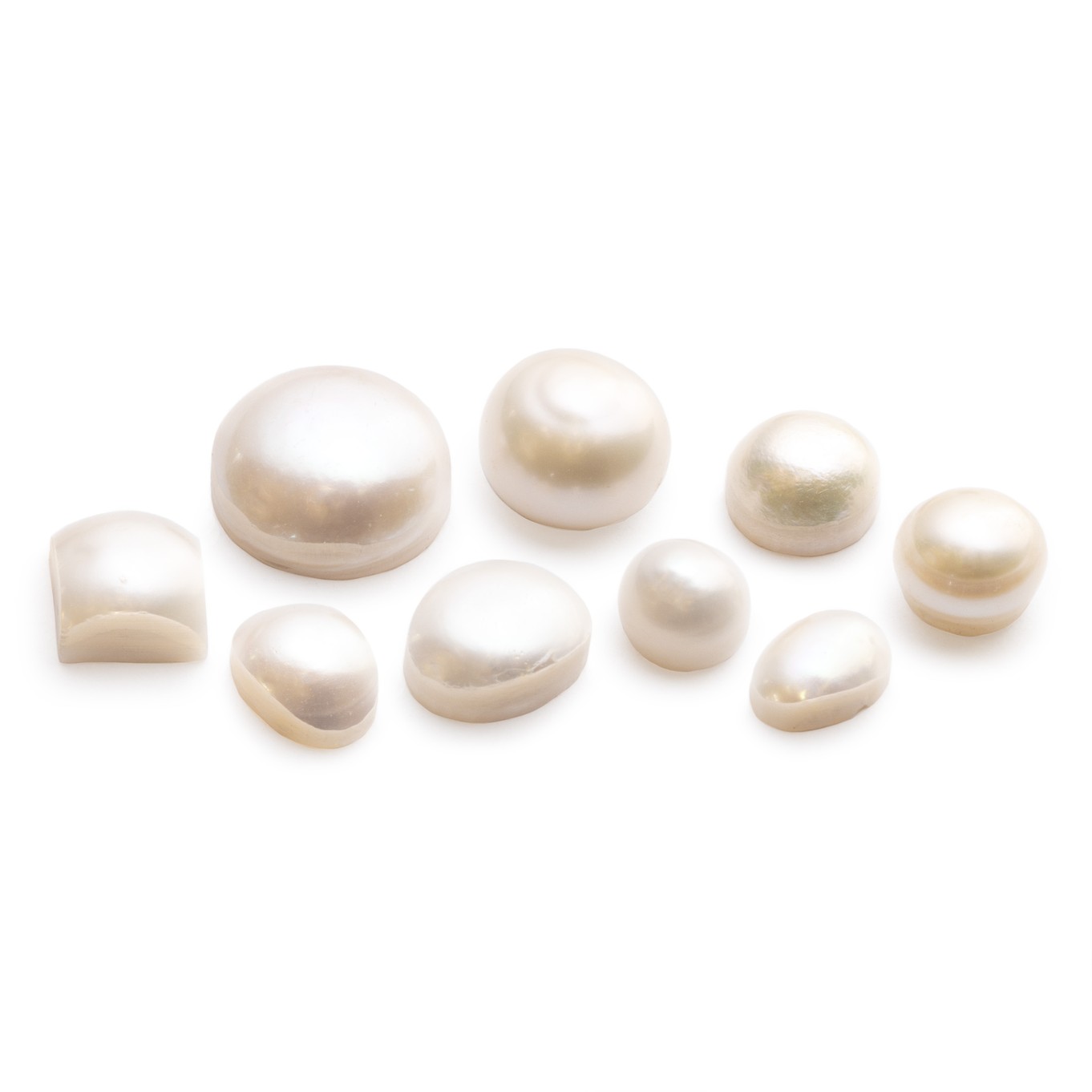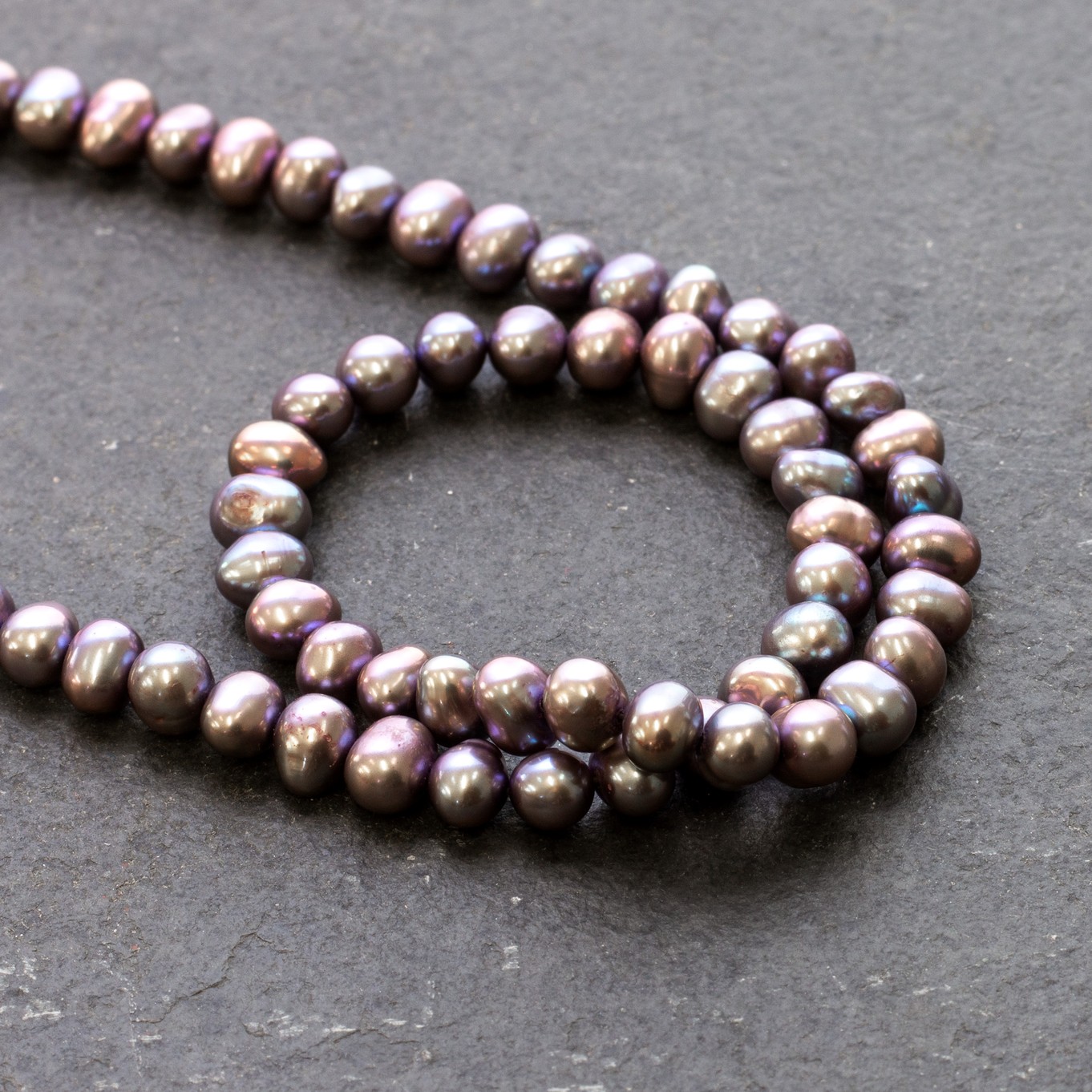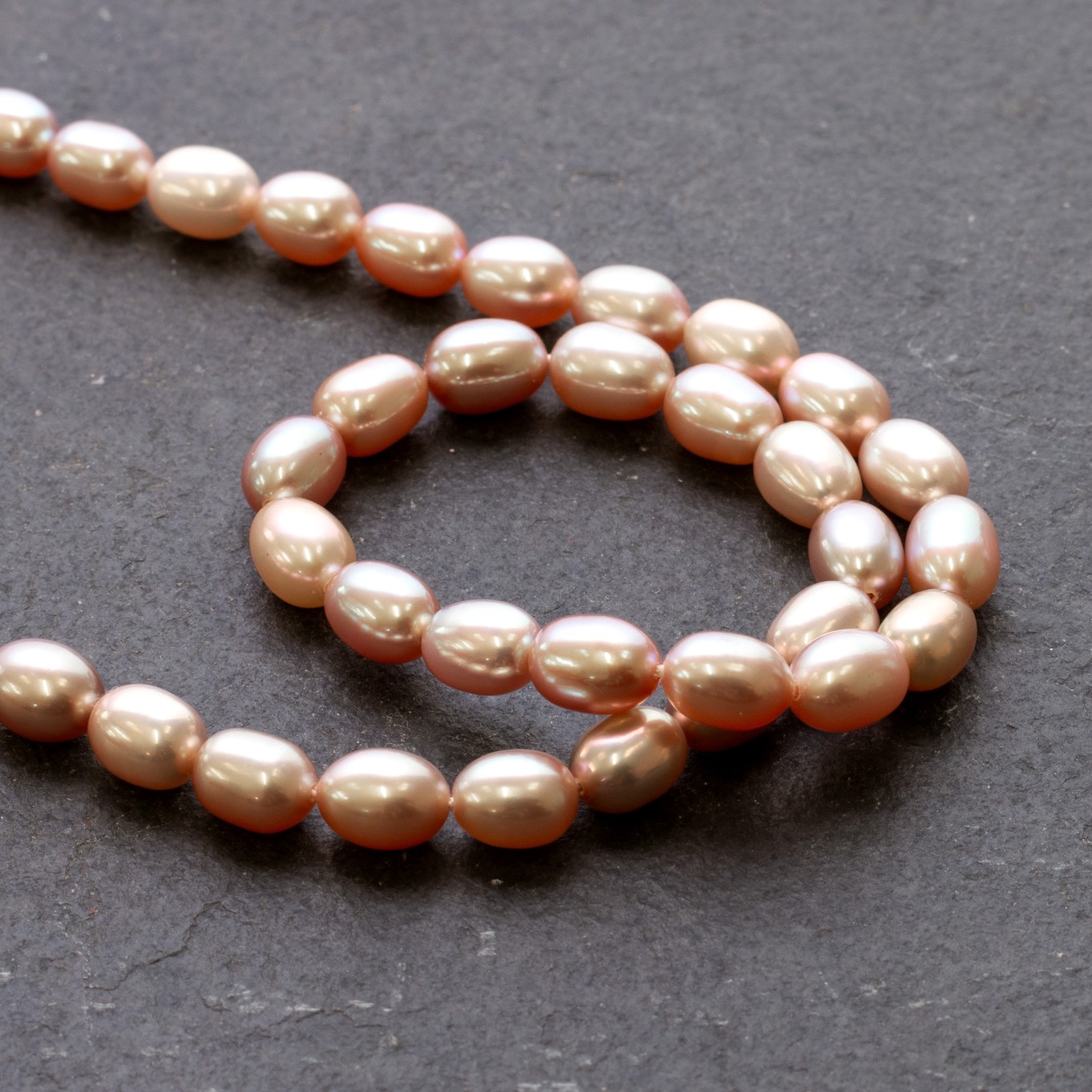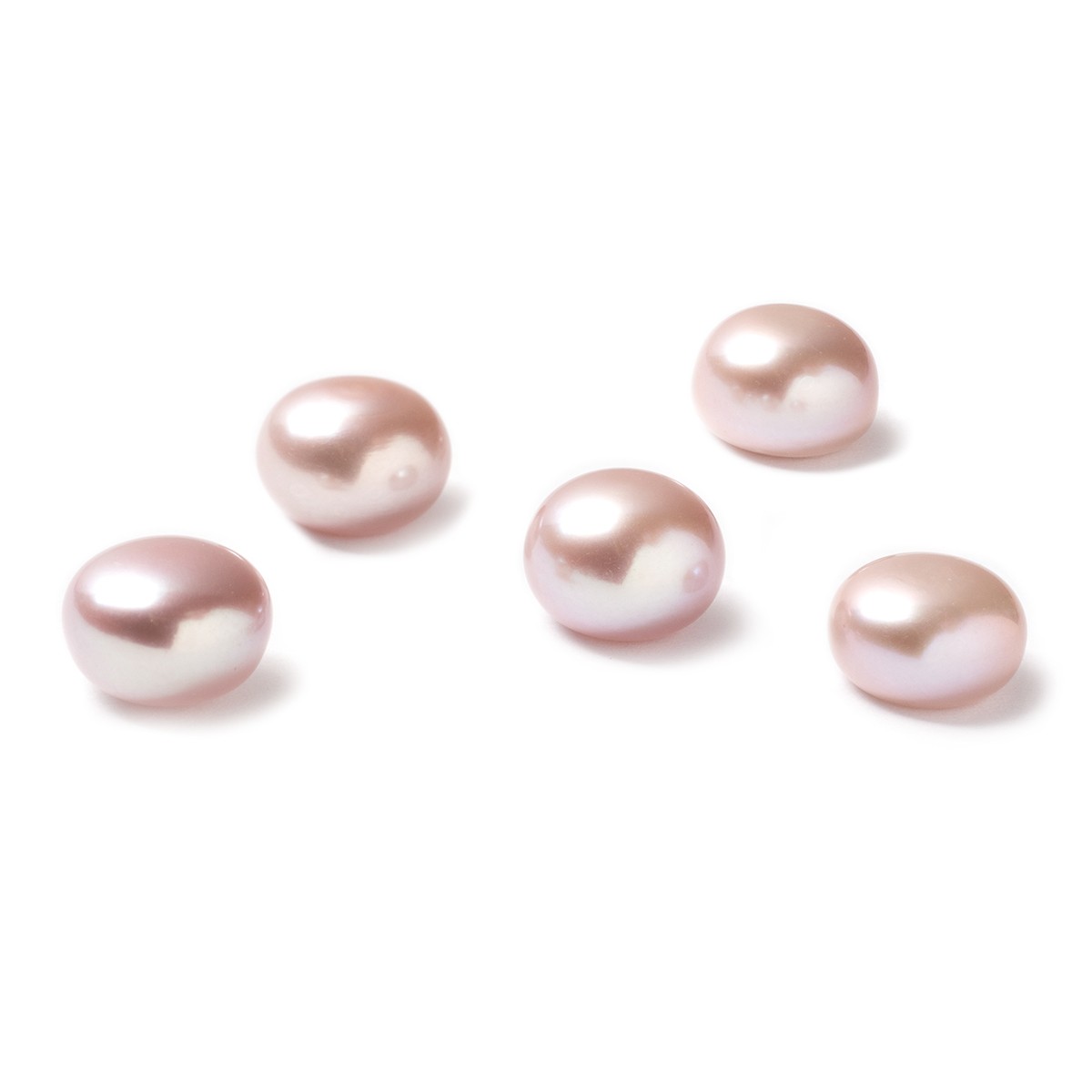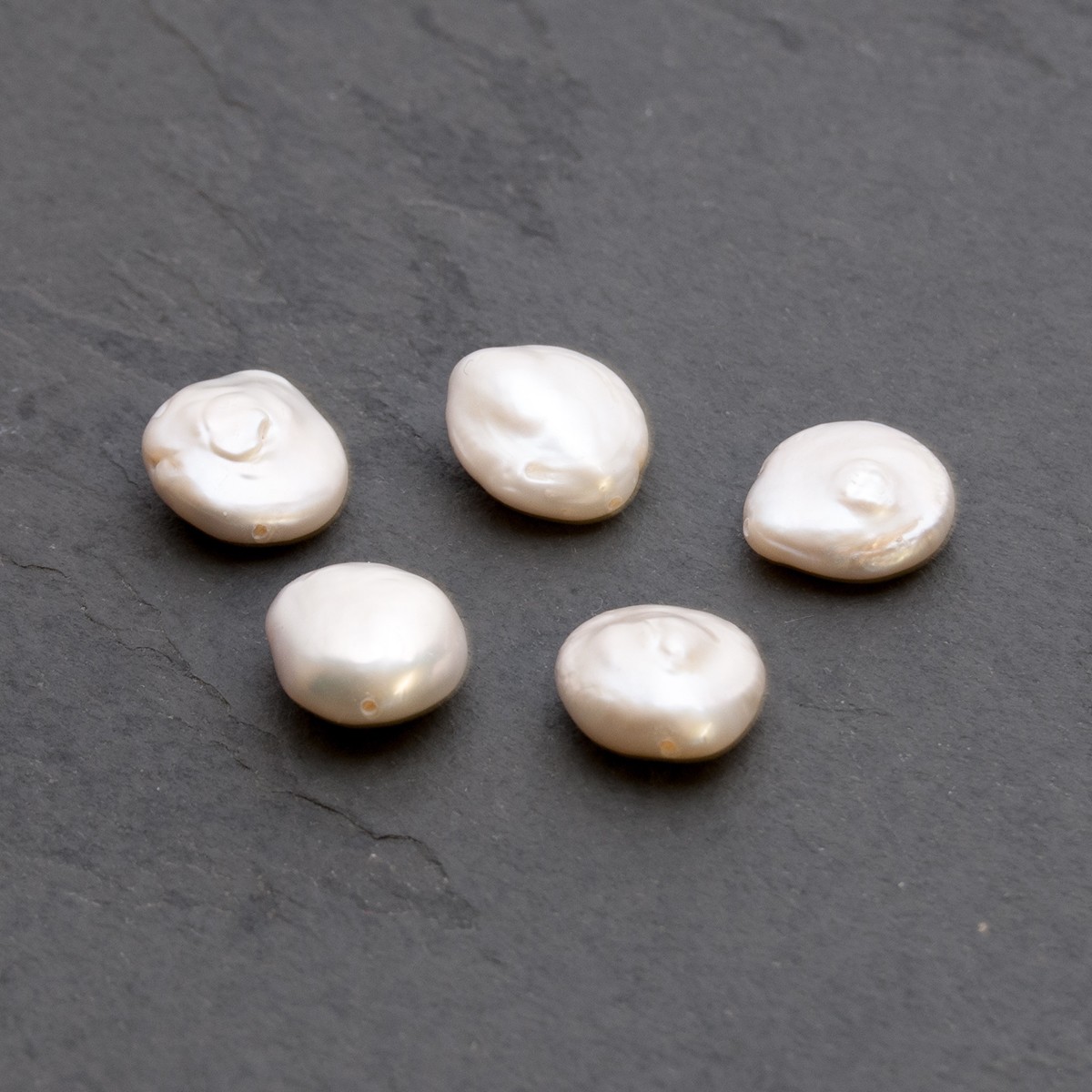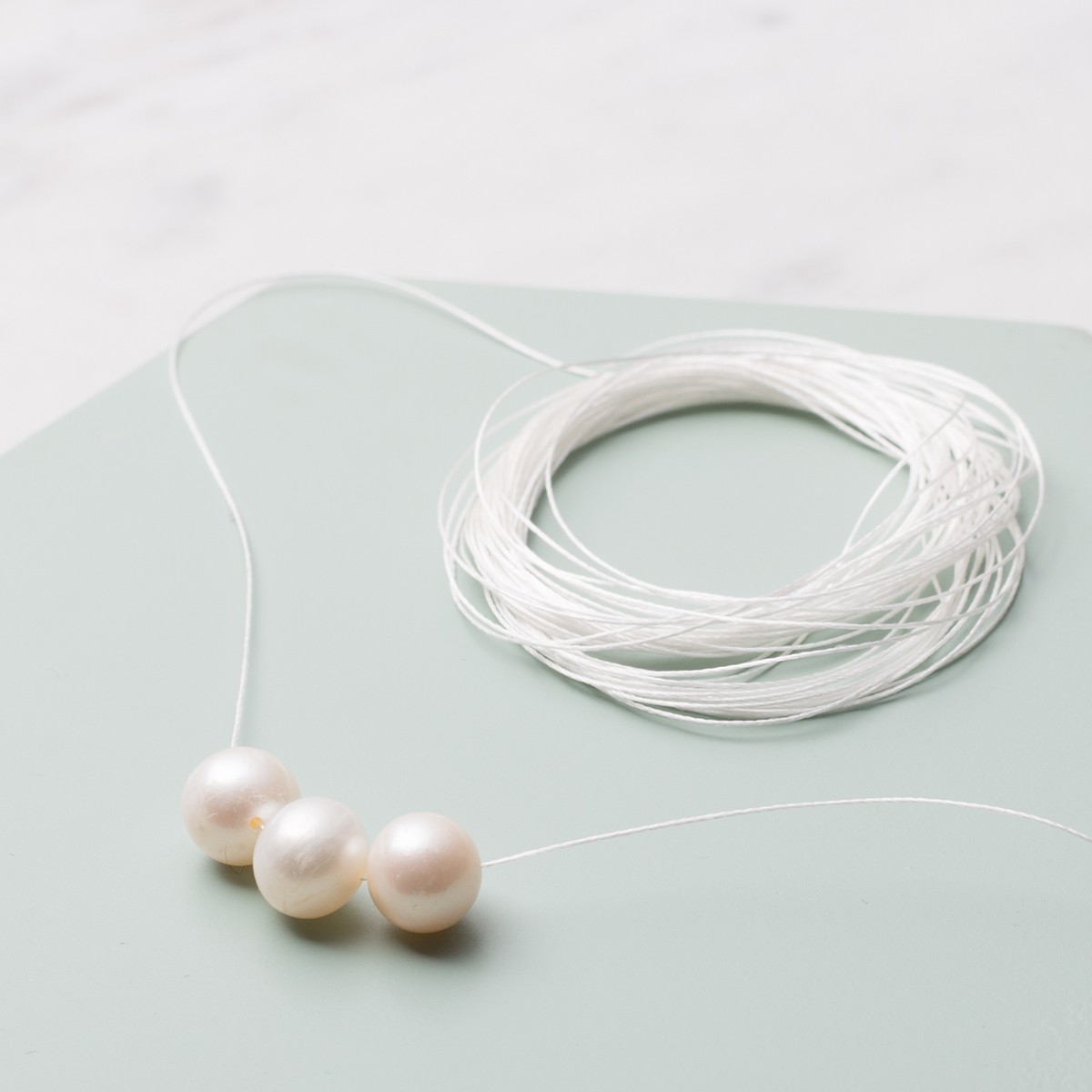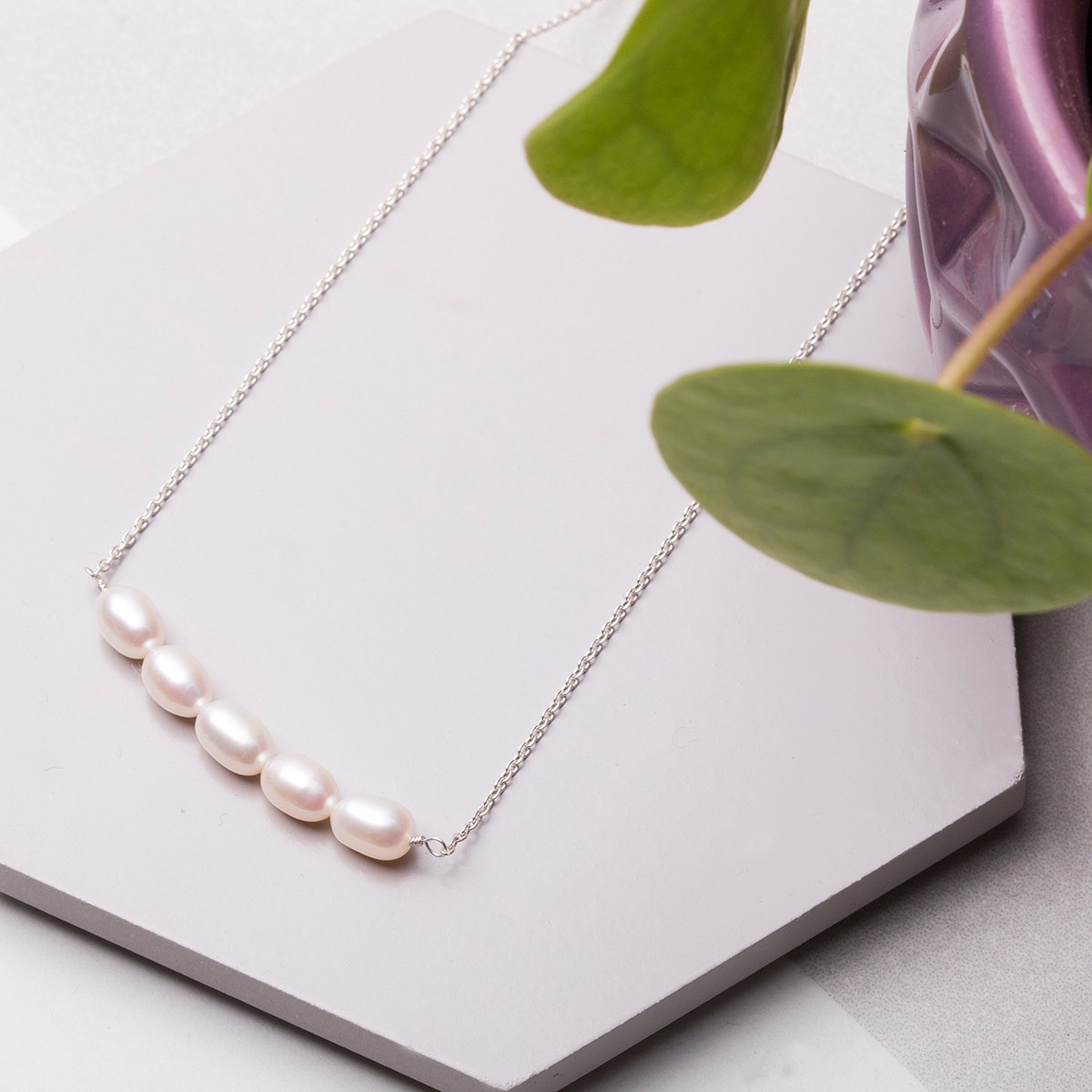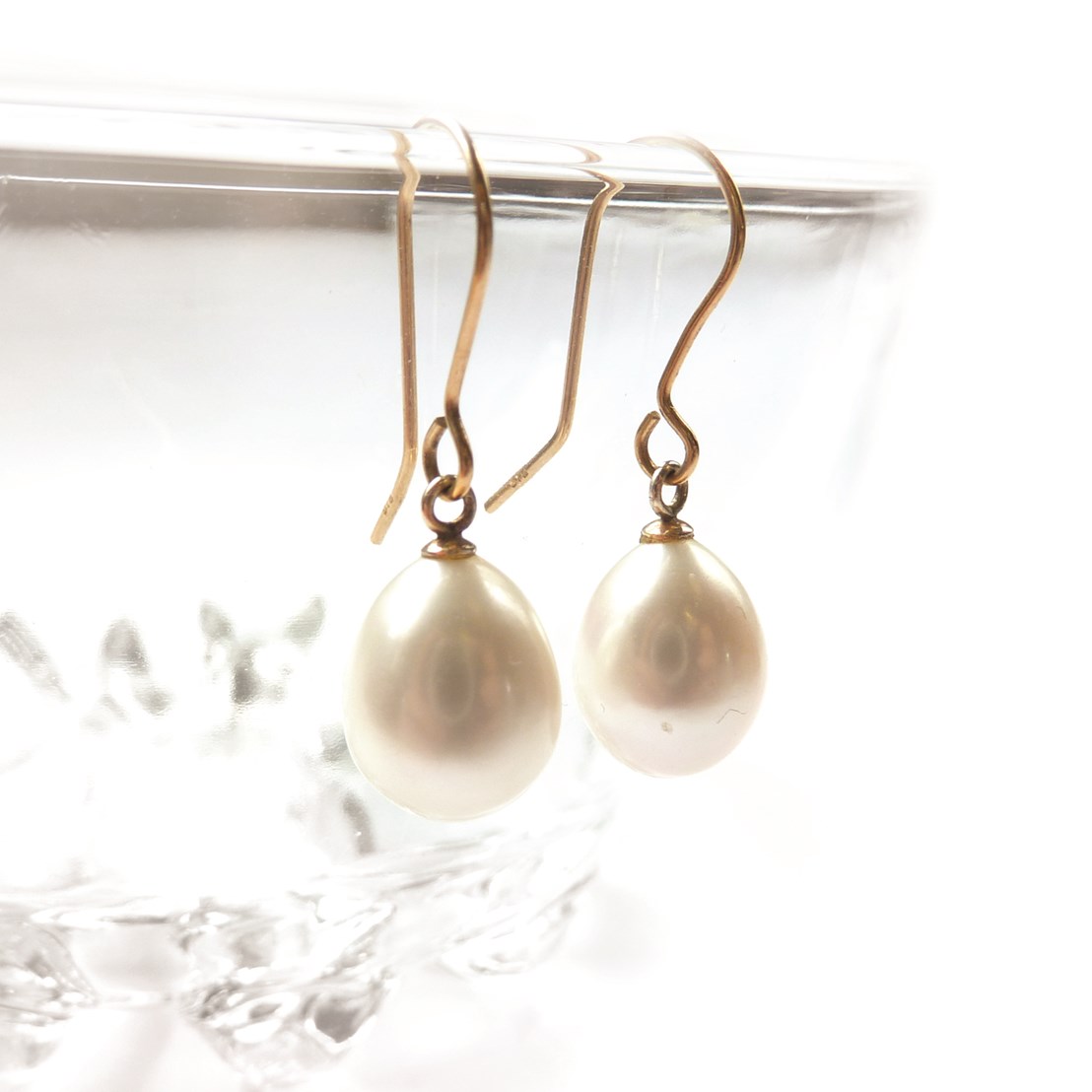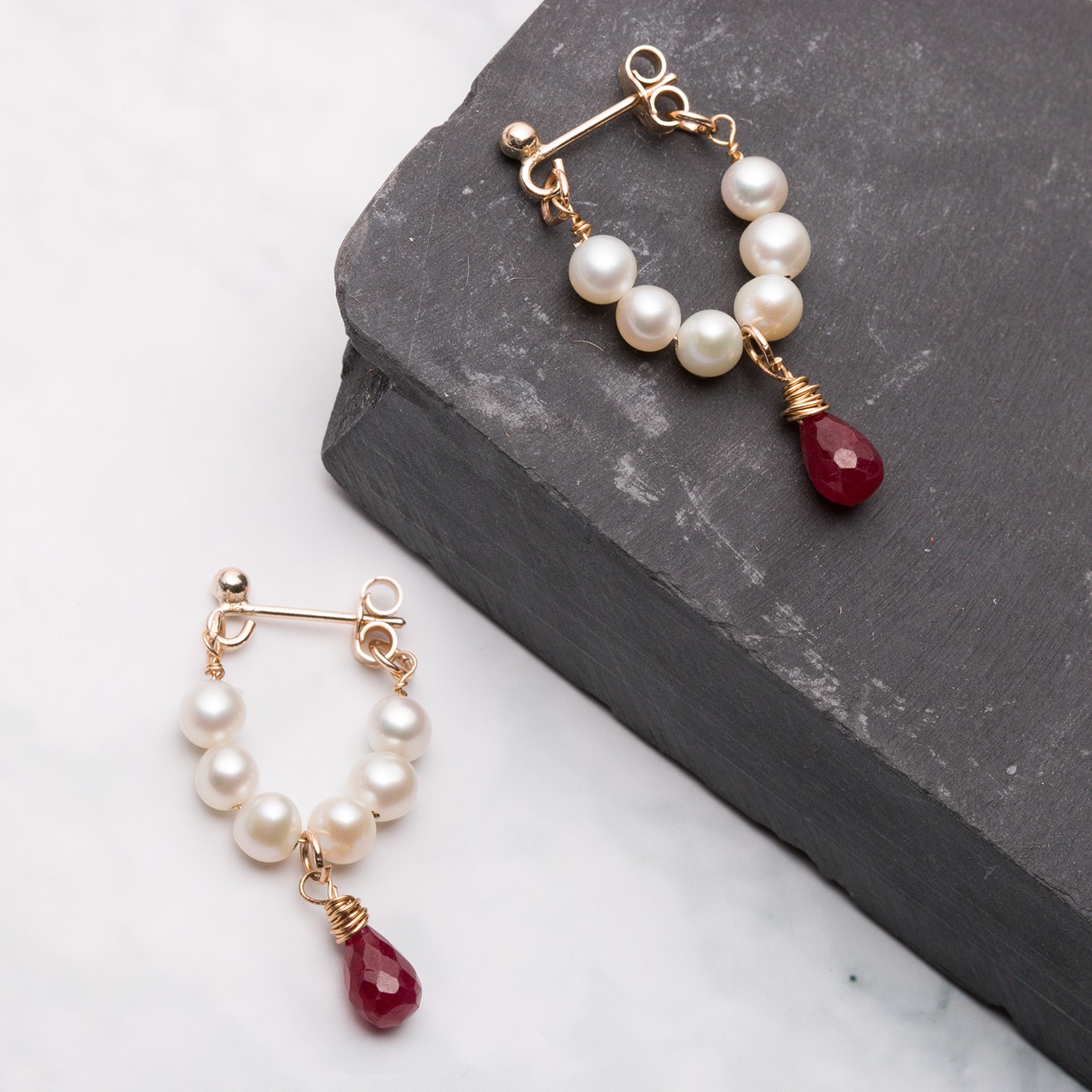Pearl: The June Birthstone
Pearl is June’s birthstone, an organic gemstone that has been adored since ancient times. The gemstone is formed within living organisms such as mussels and oysters, and they are the only gemstone to be found within the sea!
The pearl is thought to be a calming gemstone, symbolising purity and protection while also having connections with the moon. Today, pearls remain a popular fashion accessory and here at Kernowcraft, we provide a huge selection of pearl gemstones and beads in a whole array of colours and shapes for you to use in your handmade jewellery designs.
Read below to find out more about this beautiful gemstone and of course, a few pearl jewellery ideas for your next project!
You can find more inspiration with our beginner friendly jewellery making kits as well as our free jewellery making tutorials.
What is a pearl?
A pearl is produced in the soft tissue of a living shelled mollusk - such as an oyster or a mussel. It is made of calcium carbonate which has been deposited in concentric layers. A pearl is formed when there is something irritating the mantle folds inside the mollusk - this is normally something such as a piece of grit or sand that has made its way inside. The mollusk begins to protect itself from irritation by covering the piece of grit or sand with layers of nacre — the mineral that the mollusk's shell is made from (also known as mother-of-pearl). This process continues, layer upon layer, until the iridescent pearl is formed.
What is a cultured pearl?
Nearly all of the pearls on the market today are cultured. A cultured pearl is created by placing a piece of mantle tissue inside the mollusk which then deposits layers of nacre around the nucleus, dissolving it and creating the pearl. Naturally created pearls are extremely rare as only a small percentage of mussel will ever produce a pearl – it is said that one in ten thousand molluscs naturally produce gem-quality pearls. This is why we culture them! It is still a natural process, however it has been instigated by humans.
More facts about pearls
Colour: Natural and cultured pearls come in a whole range of beautiful colours. The most popular colour choice is white and cream, which is mainly associated with a bride on her wedding day but also classic jewellery designs too. Other colours include black, silver, green, pink, green and many more - these colours are determined by the certain organism which produces the pearl.
Appearance: Pearls can be found in a variety of shapes and sizes which make them a really interesting gemstone. The shape is formed by many factors of the organism such as the size of its nucleus and the position of the pearl. Some shells can have flattened sides due to being pushed up against the shell whereas others may have ridges from the pressure around them. Round pearls are actually very rare, which explains why the more round a pearl is, the higher in value it will be.
Rarity: Natural pearls are very rare however cultured farm-grown pearls are easily sourced.
Moh's Scale Hardness: Pearls measure 2.5 on the Mohs hardness scale which means it is a soft gemstone, therefore you need to ensure that you take great care of your pearls to avoid scratches and damage.
Sourced: South Pacific and the Indian Ocean.
What's the difference between cultured freshwater pearls and cultured saltwater pearls?
Cultured freshwater pearls are created using freshwater mussels. They come in a variety of natural colours but are also often dyed to create stronger and more unusual colours. Cultured freshwater pearls tend to be cheaper than cultured saltwater pearls as mussels can produce far more pearls per shell – typically between 24-32 pearls. The quality can vary vastly, so we have carefully selected pearls that are good quality and have great lustre.
Cultured saltwater pearls are created using saltwater oysters. A shell bead (often mother of pearl) is placed inside the oyster which then deposits layers of nacre around the nucleus bead. They are better quality than cultured freshwater pearls and tend to be more round in shape due to the shell bead nucleus. They also have better lustre than cultured freshwater pearls. As with many cultured saltwater pearls, ours are created in Japan.
What is mother of pearl?
Mother of pearl is the common name for the iridescent 'nacre' that forms inside the lining of the shells of abalones or oysters. It is more common than pearls and is found worldwide, it is caused by calcium carbonate which creates an extremely silky texture and iridescent appearance. It is mined in many regions including Japan, Australia, Europe and the USA and measures 3.5 on the Mohs hardness scale.
Learn more about Pearls
Formation & History Of Pearls
Pearls are one of the oldest gemstones ever discovered and were probably found by people searching for food along the seashore.
The oldest pearl is thought to be found back in 420 BC, worn by a Persian princess which is now featured in La Louvre in Paris, France.
Pearls are formed when an irritant is trapped in a bivalve (such as an oyster). Once the living organism senses the irregular particle, it will coat it in layers of aragonite and conchiolin - the very same substance its shell is made of. The pearls high lustre is created from the crystalline structure of nacre which then reflects the light - creating that gorgeous finish we all know and love.
The gemstone has a history of myth and legend, especially as it is sourced from the sea. The pearl was often linked to royalty and the ruling class, meaning they were an item of luxury. In fact, Julius Ceaser created a law to ensure that pearls could only be worn by the ruling classes - knights would also be seen wearing pearls, believing it would protect them in battle.
And weddings you ask? Well, Ancient Greeks supposedly believed that pearls would stop women crying on their wedding day! By
Mythology, Healing & Spiritual Qualities Of Pearls
The pearl symbolises purity, faith and loyalty. It is also believed that the pearl represents femininity and creates balance in oneself.
Chinese myth would often associate pearls with dragons, claiming that pearls fell from the sky when fighting among the clouds. The Chinese have also relied on pearls and their healing properties, using them to treat the skin to problems such as indigestion.
Pearls come in an array of colours, and with each colour brings a new message - for example, cream represents success whereas black is thought to bring you good luck!
Pearls Come In So Many Shapes & Sizes
For jewellery making, you can use a whole range of different styles and shapes of pearls. At Kernowcraft, we have worked hard to create a selection of pearls that are high in quality but also great in value.
There are a range of different pearl styles for jewellery making which are often by-products of cultured pearl production - It’s hard to get a pearl completely round; for this matter the price jumps considerably for perfectly round pearls, especially with strands of pearl beads.
Button shaped pearls
Button shaped pearls are nice and domed on the top with a slightly flat bottom. This is achieved by putting something of this shape within the mollusk for the pearl to form around it. We stock half drilled button shape pearls which are great for gluing into settings with pegs for earrings and rings.
Coin shaped pearls
Coin shaped pearls are cultured pearls. The pearl farmer will insert a flat round nucleus made of shell to help the mussel form the shape of a coin, turning the shell so that there is an equal thickness of nacre on both sides of the pearl. This process can take up to a year before the pearl is ready.
Need some advice on pearls?
How should I care for my pearls?
Pearls are fairly delicate and require a little TLC to keep them in good condition. As they are relatively soft they can be susceptible to being scratched and damaged. Cosmetics and the natural oil from our skin can also dull the lustre. It is recommended that you apply any perfume, hairspray or other cosmetics before putting your pearls on. After wearing, wipe them with a soft damp cloth to remove any residue and store them separately away from any hard items to avoid scratches. If you pearls are strung on silk it is also a good idea to restring them periodically.
How should I string my pearls?
Pearls traditionally come strung on silk thread. If you wear your pearls very often it is recommended that you re-string them about once a year. For extra security you should knot the thread between each pearl – this will prevent all your pearls falling off the strand if it should break and also stops the pearls from rubbing against each other causing damage.
We recommend The Basics of Bead Stringing as a great go-to book for stringing techniques. If you’re looking for a slightly longer-lasting thread we recommend our Flex-Rite 7 extra fine jewellery wire. At 0.3mm in diameter it is perfect for pearls as they have very small drill holes and it is incredibly strong yet offers a lovely flexible drape.
Discover Jewellery Designs Using Pearls
From your wedding day to delicate drop earrings, here at Kernowcraft we have a number of pearl jewellery designs to inspire you.
Elastic Pearl Bracelet With Charm
This is a great beginner's project that uses elastic thread to create a really simple bracelet design, we've also added a sweet little shell charm to complete the look!
Gold Pearl Drop Earrings
This classic design features top drilled pearl beads, with glued peg with loop hung onto 9ct gold earwires.
Resources:
Also in this section:
- The Chakras & Stones For Beginners
- Top Gemstones For Love & Valentine's Day
- Rare Ammolite For Jewellery Making
- 5 Gemstones To Honour Your Mum
- 5 Gemstones To Wear On Your Travels
- Mohs Hardness Scale, Gemstone Durability & Jewellery Making
- Top 10 Affordable Gemstones For Jewellery Making
- Your Guide To Anniversary Gemstones & Jewellery Making
- Your Guide To Birthstones & Birthstone Jewellery
- Discover Rare Cornish Turquoise
- Garnet: The January Birthstone
- Amethyst: The February Birthstone
- Aquamarine: The March Birthstone
- Diamond: The April Birthstone
- Emerald: The May Birthstone
- Pearl: The June Birthstone
- Ruby: The July Birthstone
- Peridot: The August Birthstone
- Sapphire: The September Birthstone
- Opal: The October Birthstone
- Topaz: The November Birthstone
- Turquoise: The December Birthstone
- Types Of Diamonds For Jewellery Making
- Lapis Lazuli, The Stone For Truth & Communication
- Types Of Agate Stones For Jewellery Making
- What Are Precious & Semi-Precious Stones?
- Watermelon Tourmaline For Jewellery Making
- 6 Stones For Alternative Engagement Rings
- Rare Tanzanite For Jewellery Making
- Gemstones For Your Inner Mermaid
- 5 Spiritual Gemstones To Help Your Mind & Body
- Rose Quartz, The Love Stone
- What Are Drusy Gemstones?
- What Is A Boulder Opal & How Do We Source Them
- All About Our Natural Untreated Turquoise

